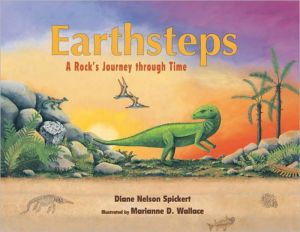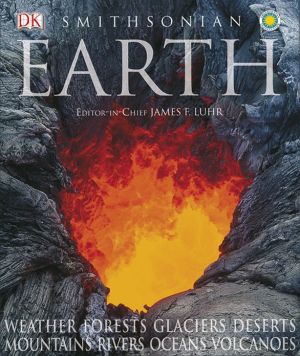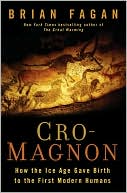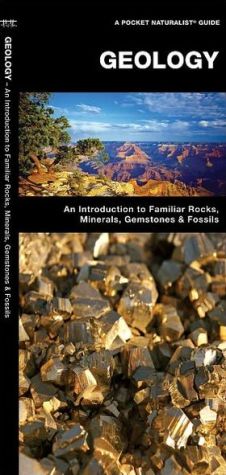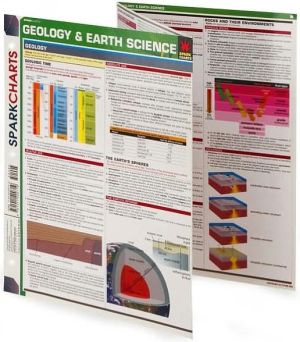Earthsteps: A Rock's Journey through Time
This engaging and educational picture book takes readers on one rock’s geological odyssey through time. Gorgeous, full-color illustrations and a detailed timeline of a rock’s journey teaches students about earth science and the geologic cycle. Also includes a glossary of geologic terms.\ Diane Nelson Spickert was an exploration geologist with a major oil company for more than twenty years and a field trip leader at Dinosaur Ridge in Morrison, Colorado.\ Marianne D. Wallace is a natural...
Search in google:
A kid-friendly exposition of how one rock journeys through its geological cycle. Children's Literature A large chunk of granite breaks away from the mountain and lands on a rock pile near a shallow pond. The journey from igneous rock to sedimentary rock has begun. Though it will take many millions of years and will cover many relative time periods, the reader is kept interested because the format for this journey is a story, with the rock being the main character. This rock-cycle story is enhanced by geologically accurate descriptions and illustrations of creatures, plants, conditions and their effects on the rock's journey. Even young children will be interested in the process that turns rock into sand and then back into rock. The only difficult aspect for children (and perhaps adults) to comprehend is the expanse of time. Many millions of years, from Permian to present day, is a difficult concept to grasp when we are accustomed to dealing with a much smaller time frame on a day to day basis. This is, however, a very educational and noteworthy book, for it combines two or more lessons into one. Teachers and parents will recognize that this is one of those books. Science, reading and listening, and comprehension skills can all be addressed with this book. It also includes a geologic time scale, an especially helpful glossary and a bibliography. 2000, Fulcrum,
\ Children's LiteratureA large chunk of granite breaks away from the mountain and lands on a rock pile near a shallow pond. The journey from igneous rock to sedimentary rock has begun. Though it will take many millions of years and will cover many relative time periods, the reader is kept interested because the format for this journey is a story, with the rock being the main character. This rock-cycle story is enhanced by geologically accurate descriptions and illustrations of creatures, plants, conditions and their effects on the rock's journey. Even young children will be interested in the process that turns rock into sand and then back into rock. The only difficult aspect for children (and perhaps adults) to comprehend is the expanse of time. Many millions of years, from Permian to present day, is a difficult concept to grasp when we are accustomed to dealing with a much smaller time frame on a day to day basis. This is, however, a very educational and noteworthy book, for it combines two or more lessons into one. Teachers and parents will recognize that this is one of those books. Science, reading and listening, and comprehension skills can all be addressed with this book. It also includes a geologic time scale, an especially helpful glossary and a bibliography. 2000, Fulcrum,\ \ \ \ \ School Library JournalK-Gr 3-The 250-million-year journey of a rock is told, from its first fall from a mountaintop to its formation into sandstone. The book opens with a nicely rendered geologic time scale that highlights the various periods and changes that occurred. Attractive illustrations have the appearance of dioramas created with animal toys, leaves, and shells. The rock's journey is geologically accurate, moving from large to small through the effects of weathering. The animals that pass by it, particularly the dinosaurs, add interest. The problem with this book is that the story format and the science don't mesh. While the whole sweep of geologic history is surely dramatic, the tale of one random rock lacks the characterization necessary for a good story. The rock, appropriately not personified, is unaware of what is happening to it. Whole geologic periods pass with the slightest note: "Permian conifers surrounded the pond." The language, necessarily scientific and defined in a glossary, doesn't help to move the story along: "Imbedded in the alluvial fan, the rock overlooked a shallow pond." Children drawn to the illustrations are unlikely to have enough prior geologic knowledge to stick with the text. Still, there will be a few very young, gifted geologists who will find this fascinating.-Ellen Heath, Orchard School, Ridgewood, NJ Copyright 2002 Cahners Business Information.\ \
